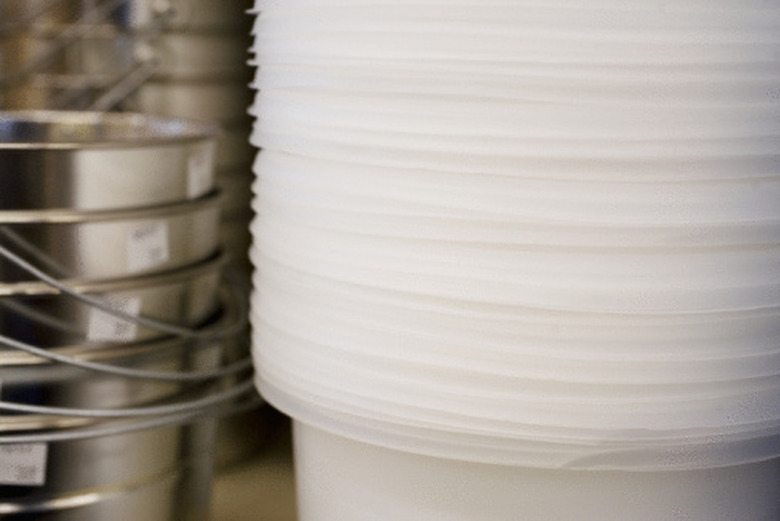The Disadvantages Of Using Plastic Products
The use of plastic products has increased significantly in the recent past, with many enterprises joining the industry and many more varieties of plastics being made. Firms consider plastics easier and cheaper to manufacture as compared to other materials — such as metals and stones — because they're produced from byproducts of crude oil and can be recycled. Consumers also consider plastics lighter, compared to other packaging materials. However, the wide use of plastic products has shortfalls.
Harmful Nature
Harmful Nature
Disposable plastics used in packaging foodstuff meant for human consumption contain harmful compounds. Improper disposal of these packaging products leads to these harmful compounds finding their way to water bodies, where they dissolve over a long time due to their non-biodegradable nature. Littered plastics are also harmful to animals because they occasionally eat them and die. Additionally, plastics fabrication involves the use of potentially dangerous chemicals, which are added as stabilizers or colorants. Most of these chemicals have not undergone an ecological risk appraisal, and their impact on human well-being and the environment is presently vague. One example is phthalates, which are used in the manufacture of PVC.
Environmental Degradation
Environmental Degradation
Plastics are generally non-biodegradable; hence, they may take centuries to decay. This is due to the intermolecular bonds that constitute plastics, whose structure ensures that the plastics neither corrode nor decompose. Plastics disposed of indecently get washed away to water reservoirs. They clog waterways and float on reservoirs, polluting and making them unsightly.
Low Melting Point
Low Melting Point
Plastics generally have a low melting point, so they can't be used where heat levels are high. This also means they cannot be used as protective barrier for furnaces. Some plastic products are highly flammable — polystyrene, acrylics, polyethylene and nylons commonly used in packaging, home and office appliances. This makes them a fire hazard.
Durability
Durability
Plastics generally have a short useful life compared to metals. This short life cycle results in pile-ups of unwanted garbage in the office, home or waste yards. Although some of the plastics are recycled, most remain uncollected in dump sites and pollute the environment. Additionally, polythene bags are easily carried by wind, something that makes them almost impossible to collect for recycling.
References
- Case Western Reserve University: The Prevalence and Environmental Impact of Single Use Plastic Products; Tarique Zaman
- "March's Advanced Organic Chemistry: Reactions, Mechanisms, and Structure, 5th Edition" ; Michael B. Smith, Jerry March; 2001
Cite This Article
MLA
Tracey, Sandra. "The Disadvantages Of Using Plastic Products" sciencing.com, https://www.sciencing.com/the-disadvantages-of-using-plastic-products-13659024/. 26 September 2017.
APA
Tracey, Sandra. (2017, September 26). The Disadvantages Of Using Plastic Products. sciencing.com. Retrieved from https://www.sciencing.com/the-disadvantages-of-using-plastic-products-13659024/
Chicago
Tracey, Sandra. The Disadvantages Of Using Plastic Products last modified March 24, 2022. https://www.sciencing.com/the-disadvantages-of-using-plastic-products-13659024/
